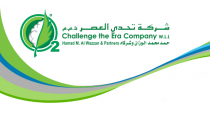The Frontline Research & Learning Institute Unveils New Report: Growth Metrics for K-12 Human Capital Management
MALVERN, Pa., March 13, 2019 /PRNewswire/ -- The Frontline Research & Learning Institute today announced the release of "Growth Metrics for K-12 Human Capital Management" (HCM), a report that articulates a framework for tracking and using talent data to inform the policies and practices aimed at recruiting, retaining and supporting effective teachers. Rather than adopt a transient approach to HCM, the report urges a deliberate strategy that is grounded in evidence for thoughtful and lasting short- and long-term results.
"Education reforms have come and gone over the last decade but investing in recruiting, hiring and talent management processes should never be victimized by shifting policies or politics," says Elizabeth Combs, Managing Director for the Frontline Research & Learning Institute. "Legislation and policy changes provide new opportunities to focus on human capital management strategies and lean on data to make change and measure progress."
To that end, the institute report outlines Key Performance Indicators (KPIs) to help address human capital at each point along a lifecycle from recruitment through ongoing professional learning. The metrics - generated from Frontline Education's vast and diverse database of more than 80,000 schools and several million users - are organized into buckets of recruiting and hiring, engagement and learning and evaluation and feedback. KPIs include:
-- Jobs are posted in January-March and filled no later than April - to
assure the best candidates can identify open roles early and that hiring
managers have a broad selection of high-quality candidates. In the most
recent year, postings were more concentrated in May and hiring peaked
between July and August.
-- The time it takes to fill open teaching positions is brief and
standardized - to bring efficiency and effectiveness to selecting for
long-term retention and educator success. Data shows that it takes the
most time to fill positions posted in October which may be attributed to
holding roles open for seniority-based hiring processes as part of
Collective Bargaining Agreements. Opening hiring windows earlier and
making roles available based upon qualifications other than seniority
sooner in the year may help.
-- Both referral and hiring sources reflect a broad diversity of origins -
Create a wide recruitment pipeline by maximizing routes like job boards
and training program partnerships but also ensure that hiring processes
do not introduce bias by hiring to match the current workforce rather
than hiring to meet the needs of students. Even in cases where the
recruiting pool is diverse, institute data shows bias can easily creep
into a hiring process that prioritizes "cultural fit" or other
characteristics of the current workforce rather than what experiences
and traits will best serve students.
-- Teachers do not need to miss school for professional reasons and should
use time away sparingly - Set schedules to dramatically reduce or
eliminate the need for professionally related absences. According to
institute data, of on average 16.4 days of teacher absences, 22.5
percent are likely to be work-related.
-- Professional development meets the minimum criteria set by ESSA -
Maximize professional development investments with high-quality learning
opportunities. The institute's data shows that most professional growth
opportunities do not meet the criteria outlined by ESSA.
-- Professional learning takes place at consistent intervals - Provide a
culture of continuous learning. Institute data indicates most
professional learning still takes place in August and September while
teachers could benefit from yearlong growth opportunities.
-- Summative performance evaluations show differentiation that is aligned
with educators' demonstrated skills - Accurately identify areas of
strength and growth opportunities. Institute data suggests evaluation
systems have matured and may provide more accurate, differentiated data
that educators and their coaches can use to improve performance.
-- Educators regularly collaborate with other educators in their subject
areas, grade levels and across the curriculum - Cultivate open, honest
and actionable feedback that is delivered in a safe and productive way.
Most evaluation efforts, according to institute data, occur in isolation
and are not conducive to observation and effective feedback. Adjusting
scheduling to give teachers time each week to talk about practice and
plan for instruction.
Fittingly, the report was released during the first annual Frontline Insights Summit in Orlando, a two-day conference focused on supporting education leaders and ensuring that they lead confidence, leveraging the right strategies and data to make informed decisions on behalf of their schools, educators and students.
About the Frontline Research & Learning Institute:
The?Frontline Research & Learning Institute?is a division of?Frontline Education, a leading provider of school administration software, empowering strategic K-12 leaders with the right tools, data and insights to proactively manage human capital, business operations and special education. The mission of the Institute is to provide data-driven research, resources and observations to support and advance the education community. The research is driven by the vast amount of data derived from solutions that Frontline provides to more than 12,000 educational organizations, representing over 80,000 schools and more than 60 percent of the nation's school districts.
View original content to download multimedia:http://www.prnewswire.com/news-releases/the-frontline-research--learning-institute-unveils-new-report-growth-metrics-for-k-12-human-capital-management-300811826.html
SOURCE The Frontline Research & Learning Institute





